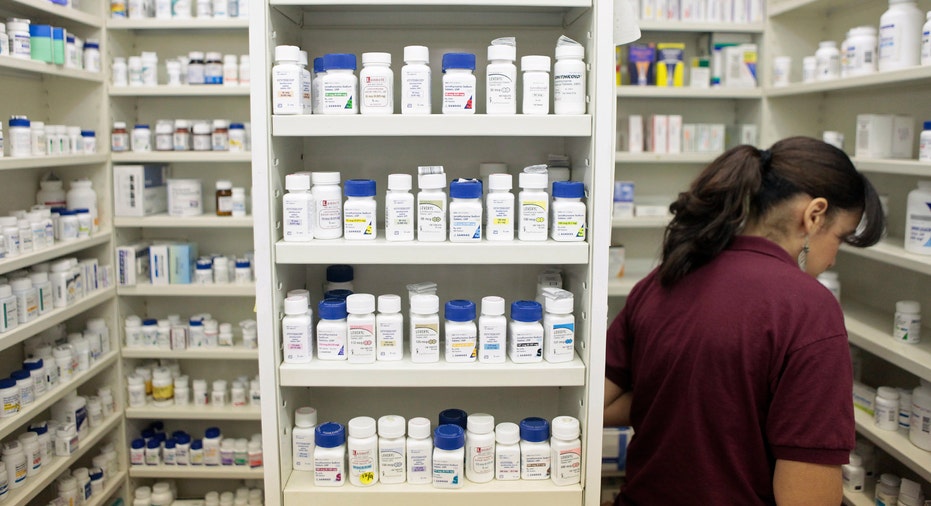Democrats Lean on Drug Pricing as Obamacare Repeal Looms

Stock prices may have soared since the November election, but the U.S. economy is ending 2016 on an anemic note.
Measures of economic vitality including income growth, consumer spending and inflation weakened last month following a short-lived spurt.
Household spending rose just 0.2% in November from the month before, a slowdown in growth from the previous two months, while incomes flatlined, the Commerce Department said Thursday. Inflation readings, which had perked up, didn't budge last month, and demand for factory-made goods remained soft.
For now, that leaves the U.S. economy in the middling trajectory that has marked the seven-year expansion.
"Underlying support for the consumer sector remains fragile at best," said Lindsey Piegza, economist at Stifel Nicolaus & Co. "The reality the consumer is facing at this point is still modest wage gains and a continued loss of momentum in income growth."
Forecasting firm Macroeconomic Advisers estimates the economy is growing at a 1.7% rate in the final three months of 2016. Federal Reserve policy makers expect the economy to grow 1.9% this year and 2.1% next year, a forecast the central bank has barely changed since the election of Donald Trump.
About two-thirds of total U.S. output goes toward domestic consumer spending. Solid household outlays during the summer helped propel economic growth to a 3.5% annual pace in the third quarter, the best quarterly increase in two years, according to revised data released Thursday. But income growth has softened: Wage and salary income rose 3.5% in November from a year earlier, the slowest year-over-year gain since December 2013.
Without stronger support from consumers and more investment by businesses, third-quarter growth momentum could wane.
"Clearly, our consumers' budgets are pinched," Dollar General Corp. Chief Executive Todd Vasos told investors earlier this month. The combined effects of a smaller share of adults holding jobs and increased housing and health-care expenses "appear to have taken a noticeable toll on their spending," he said.
Donald Trump's election raised hopes of tax cuts and deregulation, measures that could boost businesses, consumers and economic growth. But how those promises will be implemented -- and how businesses and households respond -- remain uncertain.
"There is some optimism that is beginning to develop," said Stephen Stanley, chief economist at Amherst Pierpont Securities. "Though if I were a business and I had major projects in the planning stages, I wouldn't pull the trigger until I knew the new corporate tax structure."
While job creation has been steady throughout the expansion, growth in economic output has been meager. As one sector starts to take off, often another begins to struggle. Spending on mining exploration, shafts and wells, for example, more than doubled from mid-2009 to the end of 2014 as high oil prices and new technologies spurred investment. Since that point, it has fallen by two-thirds, dragging down output.
The U.S. dollar, which has continued to strengthened since the election, poses a challenge to manufacturers seeking to sell products into foreign markets. Orders for long-lasting durable goods are down slightly in 2016 compared with last year, despite overall economic growth.
A still uncertain global economy is causing engine maker Cummins Inc. to remain cautious.
"We intend to enter 2017 much as we entered 2016, with a relatively conservative view," Chief Executive Tom Linebarger told investors last month. "What you will see is relatively conservative planning on market outcomes and pretty aggressive on how we get costs in line."
But investment in commercial and health-care building has perked up.
"There have now been 73 straight months of private-sector employment growth in the United States driven by jobs in the office-occupying, health-care and hospitality sectors -- all sectors important to us," Jim Porter, chief financial officer of Minneapolis window company Apogee Enterprises Inc., told investors earlier this month.
Price inflation remains another puzzle for businesses and central bankers alike.
The personal-consumption expenditures price index, the Fed's preferred inflation measure, was unchanged in November and up 1.4% from a year earlier. The measure had risen at a modest pace each month since March, reflecting stabilizing energy prices and somewhat firmer consumer demand allowing businesses to pass along price increases.
That firming helped support the Fed's move this month to raise its benchmark interest rate for the first time in a year. Officials indicated the pace of rate increases could quicken in 2017. But inflation readings for now are holding well below the central bank's 2% target.
November's softer inflation reading could be temporary. Gasoline and oil costs slumped in November from the prior month, but rebounded in December after oil-producing countries agreed to cut production.